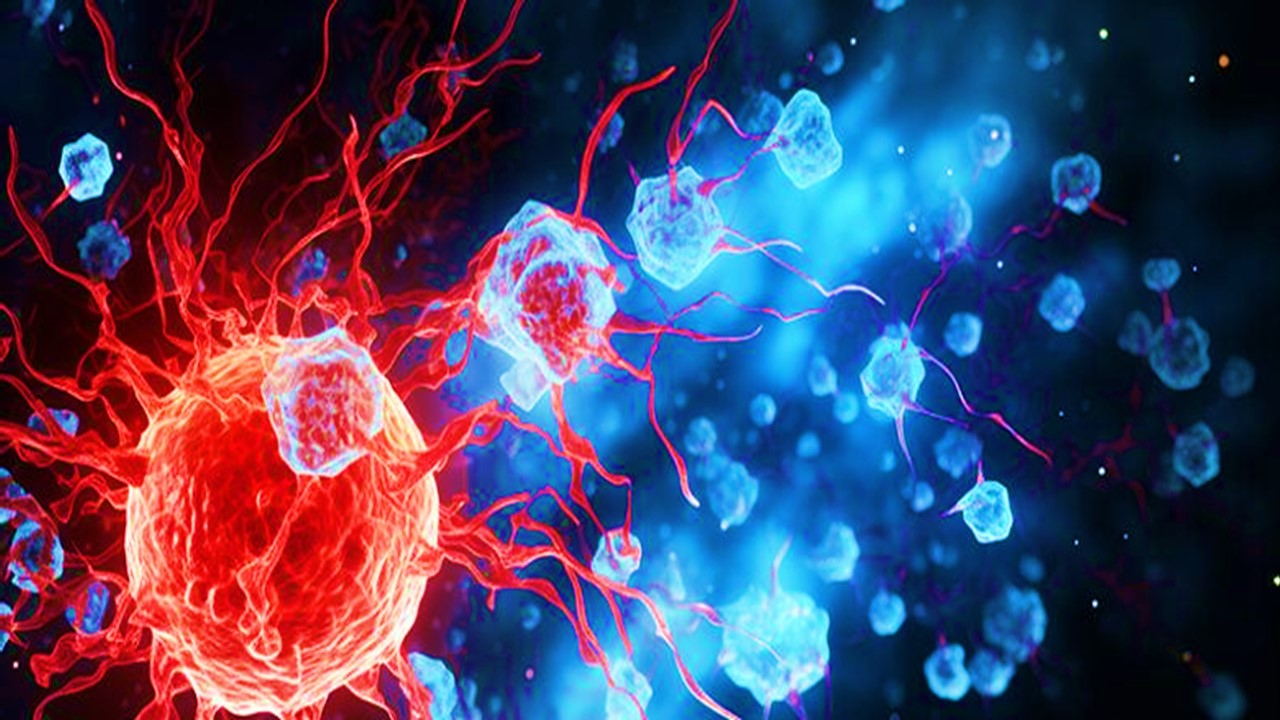Plasma cell leukemia (PCL) stands as one of the rarest and most aggressive forms of blood cancer. With an incidence rate far lower than other plasma-cell-related malignancies, PCL is often categorized into primary and secondary forms. Primary plasma cell leukemia (pPCL) occurs as an independent, de novo cancer, while secondary PCL (sPCL) typically evolves from existing multiple myeloma (MM) cases. Diagnosing PCL relies on meeting specific criteria—historically, the presence of more than 20% plasma cells in peripheral blood has been the threshold, but new definitions consider as few as 5% sufficient to classify it. These criteria underscore how crucial it is to recognize PCL early, especially given its unique clinical behavior and poor prognosis.
Unlike MM, PCL presents with an aggressive pathology, affecting several systems, including the bones, kidneys, and immune system, and often results in high levels of anemia and organ dysfunction. Its pathophysiology shares similarities with MM, yet PCL tends to exhibit distinct molecular, phenotypic, and genetic characteristics, leading to worse outcomes. Understanding the genetic landscape of PCL can provide new insights into treatment options, potential for early detection, and a more nuanced understanding of how MM may transform into sPCL in certain cases.
Unpacking the Genetics: Clues to Transformation
The transformation from MM to sPCL reveals key insights into the genetic mechanisms at play. In pPCL and sPCL, researchers have observed significant differences in the frequency and type of genetic abnormalities compared to MM. The most common aberrations in PCL include deletions and translocations, particularly within chromosomes 13q, 17p, and 1. For example, 13q deletions are almost universally present in both PCL types, while 17p deletions—often associated with TP53 gene disruptions—are more prevalent in sPCL. Such genetic mutations contribute to disease aggressiveness, impacting prognosis and potentially signaling how MM evolves into leukemia.
A pivotal difference between pPCL and sPCL lies in the prevalence of MYC translocations and t(11;14) rearrangements. In pPCL, MYC rearrangements are frequent, implicating them in the cancer’s rapid progression. Additionally, t(11;14) translocations are prominent in pPCL but absent in sPCL, hinting at distinct pathways driving these diseases. In sPCL, the mutation profile aligns closely with high-risk MM, suggesting that genetic evolution over time may set the stage for MM to become sPCL. This clonal evolution—the process by which cancer cells acquire new mutations and become dominant clones—illustrates how genetic instability can drive MM into a more aggressive, leukemic form.
Cytogenetic Patterns: Diagnostic Insights and Risk Stratification
The presence of certain cytogenetic markers allows for risk stratification in MM and PCL, aiding in clinical decision-making. In both pPCL and sPCL, translocations such as t(4;14) and deletions of 13q and 17p are considered high-risk features that correlate with poor prognosis. However, hyperdiploidy—commonly associated with a better prognosis—is rarely seen in PCL patients, a finding consistent across multiple studies. This absence of favorable markers in PCL reflects its more severe nature compared to MM.
Recent studies have further refined our understanding of PCL’s cytogenetic landscape, proposing a model to stratify patients based on the number of clonal circulating plasma cells (CPCs). Higher CPC levels in MM correlate with more aggressive cytogenetic profiles, highlighting the potential of CPCs as a biomarker to differentiate high-risk patients who might benefit from intensive treatment. In PCL patients, cytogenetic patterns show a direct correlation with survival outcomes, with pPCL patients who lack high-risk markers faring significantly better than those with multiple abnormalities.
Diagnostic Advances with Next-Generation Flow and Cytometry
Next-generation flow cytometry (NGF) offers a sophisticated approach to identifying clonal CPCs in blood samples, allowing for precise quantification and risk assessment. In MM patients, detecting higher levels of CPCs early on serves as a warning for potentially aggressive disease, providing an opportunity for tailored treatment approaches. In PCL cases, where CPCs are abundant, NGF enables a more nuanced understanding of disease severity, potentially guiding treatment decisions.
In addition to CPC detection, researchers have employed fluorescent in-situ hybridization (FISH) to map cytogenetic abnormalities across PCL and MM patients. By identifying specific chromosomal deletions and translocations, such as 17p deletions linked to TP53 disruptions, clinicians gain insight into potential therapeutic targets. For example, the presence of del(1p32) and 1q amplifications in sPCL highlights chromosome 1 aberrations as a potential driver of leukemic transformation, especially as they appear less frequently in pPCL.
Clonal Evolution: A Hallmark of Aggressive Disease
Tracking the progression from MM to sPCL reveals significant clonal evolution, where newly acquired mutations signal the cancer’s transition to a more aggressive state. This clonal evolution often involves the appearance of high-risk cytogenetic abnormalities, including deletions on chromosomes 17 and 13 and amplifications on chromosome 1. Such changes may reflect either novel mutations or the emergence of resistant subclones initially present at low levels.
Unlike MM relapses, which show fewer acquired mutations, the shift from MM to sPCL involves rapid clonal shifts, underscoring the role of genomic instability. This concept of clonal evolution offers a window into the mechanisms that drive disease progression and may provide opportunities to intercept MM before it transforms into sPCL. By monitoring clonal shifts and identifying high-risk clones early, clinicians can apply more aggressive interventions, potentially delaying or preventing full leukemic transformation.
Towards a New Prognostic Model for MM and PCL
The integration of cytogenetic data with CPC quantification has led to a novel model for predicting outcomes in MM and PCL. This model, which combines FISH findings with CPC levels, allows for precise risk stratification, especially in transplant-eligible MM patients. By categorizing patients into low, intermediate, and high-risk groups, the model provides a tailored framework for treatment, helping clinicians identify those who may benefit from more intensive therapies.
In PCL patients, the application of this model has underscored the importance of cytogenetic complexity in predicting outcomes. Patients with complex karyotypes or high-risk abnormalities face a bleaker prognosis, and those with minimal cytogenetic abnormalities show comparatively improved survival rates. As clinical trials continue to validate these findings, this approach may become a standard part of PCL and MM management.
The Clinical Implications: Tailoring Treatment to Cytogenetics and CPCs
With a refined understanding of PCL’s cytogenetic landscape, treatment approaches may become more personalized. For pPCL patients, whose cytogenetic profiles often involve MYC translocations and t(11;14) rearrangements, treatments targeting these pathways could enhance outcomes. Conversely, sPCL patients, who frequently exhibit 17p deletions and other high-risk mutations, might benefit from strategies that address clonal evolution and genomic instability.
Given the rarity and aggressiveness of PCL, therapeutic advances will depend on prospective studies examining these cytogenetic markers. Emerging insights into PCL’s genetic background may guide the development of drugs targeting MYC and TP53 pathways, while NGF and FISH allow for precise monitoring of treatment responses. Altogether, these diagnostic and therapeutic innovations offer hope for improved outcomes in a challenging and complex disease.
This approach offers a clear lens into the unique genetic and clinical features of PCL, underlining the importance of cytogenetic profiling in managing plasma cell malignancies.
Study DOI: https://doi.org/10.3390/biomedicines10020209
Engr. Dex Marco Tiu Guibelondo, B.Sc. Pharm, R.Ph., B.Sc. CpE
Editor-in-Chief, PharmaFEATURES
Register your interest [here] at Proventa International’s Clinical Operations and Clinical Trials Supply Chain Strategy Meeting this 14th of November 2024 at Le Meridien Boston Cambridge, Massachusetts, USA to engage with thought leaders and like-minded peers on the latest developments in the clinical space and regulatory affairs.

Subscribe
to get our
LATEST NEWS
Related Posts

Immunology & Oncology
The Silent Guardian: How GAS1 Shapes the Landscape of Metastatic Melanoma
GAS1’s discovery represents a beacon of hope in the fight against metastatic disease.

Immunology & Oncology
Resistance Mechanisms Unveiled: The Role of Glutathione S-Transferase in Cancer Therapy Failures
Understanding this dual role of GSTs as both protectors and accomplices to malignancies is central to tackling drug resistance.
Read More Articles
Myosin’s Molecular Toggle: How Dimerization of the Globular Tail Domain Controls the Motor Function of Myo5a
Myo5a exists in either an inhibited, triangulated rest or an extended, motile activation, each conformation dictated by the interplay between the GTD and its surroundings.
Designing Better Sugar Stoppers: Engineering Selective α-Glucosidase Inhibitors via Fragment-Based Dynamic Chemistry
One of the most pressing challenges in anti-diabetic therapy is reducing the unpleasant and often debilitating gastrointestinal side effects that accompany α-amylase inhibition.













